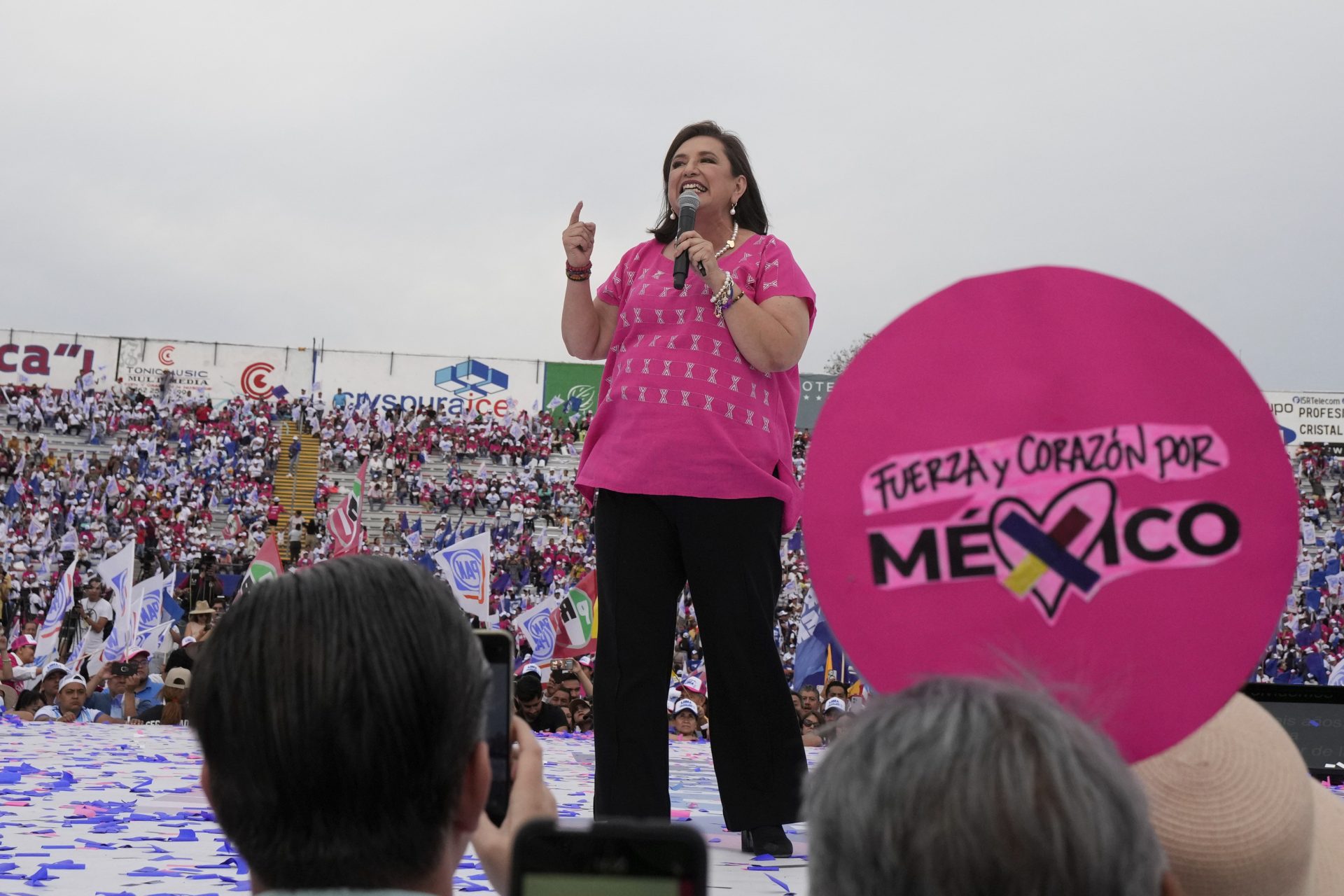I know that many of you have been enjoying spring break, the Easter holiday or March Madness. Others simply are relieved to see that the U.S. government may have averted shutdown.
There is little doubt that geopolitical uncertainty will continue to be the focus of domestic and international attention. The crises in Ukraine and the Middle East wage on without signs of letting up. Pressures with China also remain, as Beijing works to manage a slowed economy and tensions continue to mount with Taiwan. For a thoughtful piece on the state of play in the world today, Hal Brands offers the following.
In Mexico, the presidential campaigns of Claudia Sheinbaum, Xóchitl Gálvez and Jorge Álvarez Máynez officially began on March 1. The most recent polls continue to show Sheinbaum with a double-digit lead over Galvez, with Álvarez Máynez polling at around 5% To the north, Donald Trump and Joe Biden officially secured their parties’ nominations. While the American polls are less clear, one thing is for certain: This year’s elections in the U.S. will be remembered as one deeply polarized with broad implications for the future of U.S. foreign policy.
 A cutout poster of ruling party presidential candidate Claudia Sheinbaum towers over supporters during her opening campaign rally at the Zocalo in Mexico City, March 1, 2024. Mexican voters will go to the polls in the largest elections in the country’s history on June 2, 2024. In the presidential race, they will have to choose between three candidates, but two women have taken the lead: Sheinbaum and opposition candidate Xóchitl Gálvez. (Aurea Del Rosario/AP File Photo)
A cutout poster of ruling party presidential candidate Claudia Sheinbaum towers over supporters during her opening campaign rally at the Zocalo in Mexico City, March 1, 2024. Mexican voters will go to the polls in the largest elections in the country’s history on June 2, 2024. In the presidential race, they will have to choose between three candidates, but two women have taken the lead: Sheinbaum and opposition candidate Xóchitl Gálvez. (Aurea Del Rosario/AP File Photo)Overall, the Mexican economy has remained steady. As of March 2024, BBVA anticipates 2.5% growth for the year. Banxico is expected to lower interest rates for the first time in almost a year. And, Mexico’s peso is now the best-performing major currency for 2024. At the same time, challenges related to nearshoring are coming into focus, as Mexico’s struggles with manufacturing costs, serious water shortages and creaking infrastructure. For more on the challenges of direct investment globally, you might be interested in our White & Case foreign direct investment reviews.
New data show that Mexico has injected billions into Pemex during the Lopez Obrador administration; that same economic fervor did not trickle down to Mexico’s water conservation efforts, with parts of Mexico City expected to run out of water as soon as June. Monterrey and other parts of northeastern Mexico — one of the country’s main manufacturing hubs — have also struggled with water stress for years. Both energy and water issues will have to be high on the list of priorities for president Lopez Obrador’s successor.
The list of USMCA trade disputes continues to grow. On March 11, the USDA announced new rules that will require cattle to be born and raised in the United States for producers to be able to use the label “Made in the USA.” Mexico is expected to challenge this declaration. Moreover, U.S. Trade Representative Katherine Tai made statements last month that Canada and Mexico shouldn’t get “too comfortable” ahead of the agreement’s impending 2026 sunset clause, potentially signaling even more strife among the three North American nations.
While North American trade tensions heat up, China is focusing its manufacturing and trade attention toward Mexico, a fact likely to complicate our bilateral issues further. Mexico’s imports from China have grown from 1% in 1994 to 20% in 2022. Moreover, in 2023 20% of the light vehicles sold in Mexico were imported from China, a 50% increase over the previous year. China Southern Airlines has also announced nonstop flights from Shenzhen to Mexico City to begin in April, another indication of the growing trade between the two countries.
 Presidential candidate Xóchitl Gálvez speaks to supporters during her opening campaign rally in Irapuato, Mexico, Friday, March 1, 2024. Mexican voters will go to the polls in the largest elections in the country’s history on June 2, 2024. In the presidential race, they will have to choose between three candidates, but two women have taken the lead: Gálvez and ruling party candidate Claudia Sheinbaum. (Fernando Llano/AP File Photo)
Presidential candidate Xóchitl Gálvez speaks to supporters during her opening campaign rally in Irapuato, Mexico, Friday, March 1, 2024. Mexican voters will go to the polls in the largest elections in the country’s history on June 2, 2024. In the presidential race, they will have to choose between three candidates, but two women have taken the lead: Gálvez and ruling party candidate Claudia Sheinbaum. (Fernando Llano/AP File Photo)On the immigration front, there is even less political and legal consensus on how to address the challenges at the border. In February, an aggressive border security bill — which would have been the largest immigration related legislation in at least a decade — failed in Congress. Texas’s proposed SB 4 law authorizing Texas police to arrest irregular migrants in the United States has been blocked, lifted, allowed and most recently temporarily stayed by the Fifth Circuit Court of Appeals. For Mexico’s part, president Lopez Obrador has denounced the law and affirmed that Mexico will not accept deportations from state-level law enforcement.
Insecurity continues to be a concern in Mexico as well. To date, at least 19 individuals running for office in this year’s elections have been murdered. Violence is expected to continue, if not increase, as the elections loom. While this is not necessarily a surprise, the impact of insecurity and threats against candidates and civilians alike is worrisome and an immense challenge that Mexico’s next president will be expected to combat.
Antonio Garza is a former U.S. ambassador to Mexico and former Cameron County judge.
 Antonio Garza
Antonio GarzaThe post Commentary: It’s election time in Mexico, and much uncertainty looms appeared first on MyRGV.com.
 (2).png)
 2 weeks ago
66
2 weeks ago
66








 English (US)
English (US)